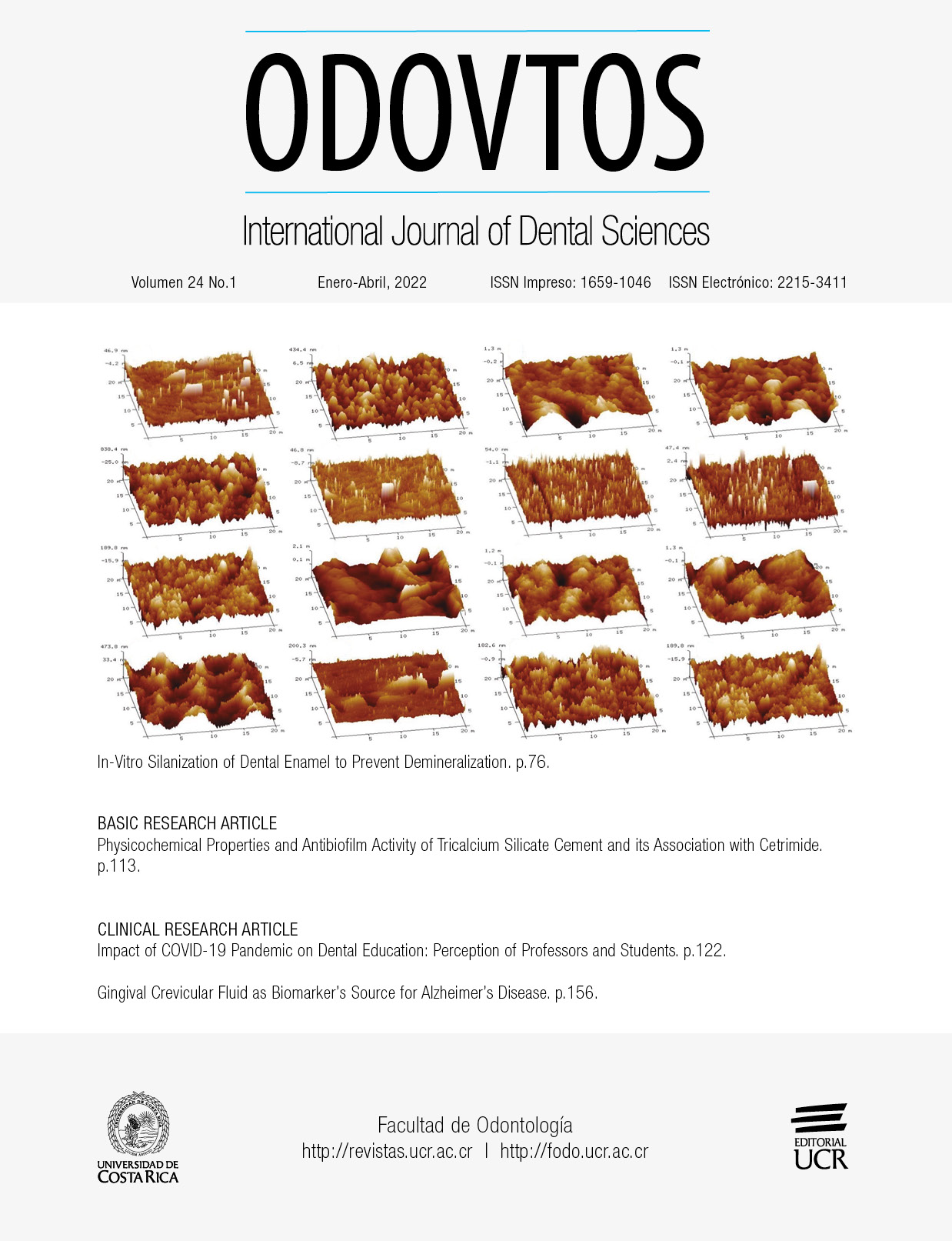Abstract
Caries is a multifactorial disease that can negatively affect dental tissues through the demineralization process, which produces acids deriving from the metabolism of carbohydrates. Some strategies to prevent this process have been proposed, such as topical fluoride application, resin-based restorations, pit and fissures sealers, infiltrated resins, vaccines, mouthwashes, and several brushing techniques. To evaluate in vitro enamel hydrophobic modification as a method of prevention against demineralization. A descriptive and comparative study was carried out. Thirty premolars extracted for orthodontic reasons were obtained, encapsulated in epoxy resin, sectioned, and sanded to obtain specimens 3mm in thickness. The samples were pretreated with NaOCl and EDTA, incubated with 1 and 4% octadeyltrichlorosilane (OTS) or with 3 and 6% octadecyltriethoxysilane (TEOS) for 5min and for 8h. Subsequently, the samples were immersed in citric acid for 2 months. The samples were analyzed by their contact angle, infrared spectroscopy, scanning electron microscopy, atomic and confocal force, before and after treatment in citric acid. The samples coated with 1 and 4% OTS for 5min and 8h kept the silanizing agent on their surface after 2 months in citric acid. The treatment with TEOS was only effective at 6% with a reaction time of 5min. The modification with 1 and 4% OTS protects the surface of the tooth enamel from demineralization in acidic medium. The results indicate that treatment with 4% OTS is effective from 5min, which makes it appropriate in clinical practice.


